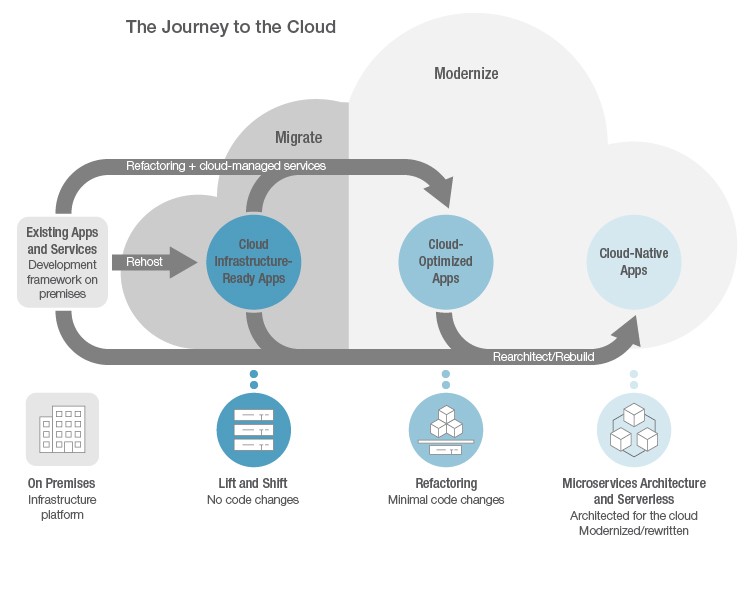
Largely due to the enormity and complexity of data, many BioPharma organizations are moving to the cloud. Generally, the life science industry has been slow to adopt the cloud, but as existing hardware are deprecated, biotech and Pharma are increasingly migrating to the cloud. There are several motivations for BioPharma organizations that necessitate moving to the cloud, including performance and speed, cost, physical and personnel resources, security, back up, and sharing/collaboration.
When an organization decides to move to the cloud, there are three different migration approaches — cloud native, lift and shift, and refactoring. A cloud native application is developed from scratch taking full advantage of the cloud computing delivery model. These applications can take advantage of several benefits of the cloud, such as the ability to offer nearly limitless computing power in addition to on-demand and modern data and application services for developers.

On the other end of the spectrum is the lift and shift approach, which is typically the least disruptive. In this instance, applications are migrated to the cloud with minimal or no changes. Applications are effectively lifted from the existing on-premise environments and shifted as-is to a new cloud hosting environment. Since there are often no significant changes to make in the application architecture, data flow, or authentication, these applications don’t take advantage of several key cloud benefits. This approach is lightweight, in that, typically only the deployment environment is changed.
The third approach, refactoring, is a hybrid approach. This strategy is employed to migrate existing applications, where specific aspects of the architecture, data flow, or authentication are rebuilt, to take advantage of the cloud. For instance, high-demand algorithms can be refactored to take advantage of high-compute infrastructure through parallelizing (multi-threading) the algorithms. This type of migration can take advantage of some cloud benefits including cloud backup and lowering deployment costs but not to the extent of a cloud native application.
When evaluating various cloud strategies (cloud-first or more selective/opportunistic), along with various migration approaches (cloud native, lift and shift, and refactoring), there is no figurative silver bullet. The cloud may be perfect for certain scenarios but not critical and even detrimental in other situations. One major downside of a cloud-first mindset is that it is often misconstrued as a cloud-only mindset by those who implement it. A cloud-only mentality enforces cloud computing solutions on all enterprise operations, regardless of need. Finally, when evaluating various approaches, it’s necessary to estimate the entire cost. Calculating what resources are required to maintain physical hardware may be as important as calculating the cost of DevOps for cloud infrastructure. Regardless of the strategy or approach, this trend of moving to the cloud will continue, especially within BioPharma.

Image adapted from docs.microsoft.com/en-us/dotnet/architecture/modernize-with-azure-containers/media/image1-1.png

